Top Help Desk Automation Software Reviewed for 2025
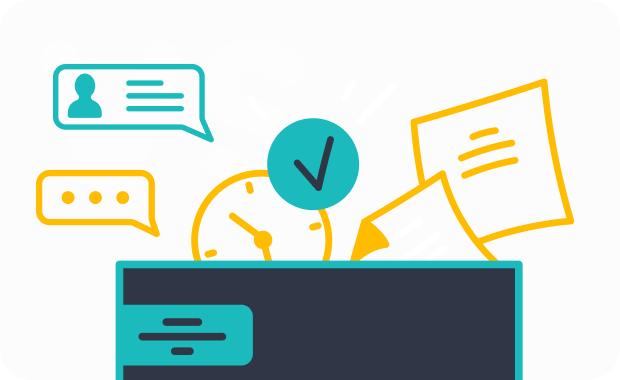
You have more choices than ever for help desk automation in 2025. Top solutions include Sobot, Sobot AI, Zoho Desk, and monday service. Over 60% of companies now use automation, and this number keeps rising as businesses seek faster, smarter support. Sobot offers an all-in-one platform with AI-powered ticketing, unified channels, and multilingual support. When selecting software, focus on features, pricing, scalability, integrations, and customer support to match your customer service goals.
- 60% of companies had implemented automation by 2024, with adoption rates expected to keep rising.
- The help desk automation market reached $8.14 billion in 2025, showing rapid growth.
Why Automation Matters
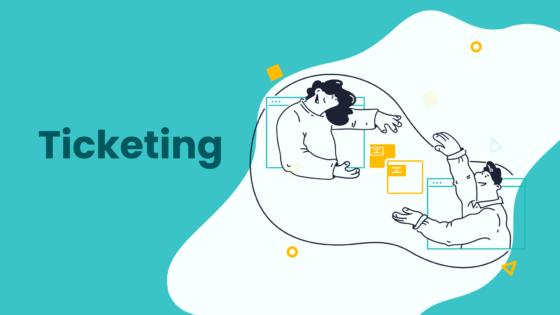
Customer Service Impact
Automation changes how you deliver customer service. When you use automation, you answer customers faster and solve their problems more quickly. The data below shows how automation improves key customer service metrics:
| Metric | Improvement with Automation |
|---|---|
| Customer Satisfaction Score (CSAT) | 1% increase (4.51 vs 4.46) |
| First Response Time | 37% faster |
| Resolution Time | 52% reduction |
| Repeat Purchase Rate | 36% increase |
| Ticket-to-Order Ratio | 27% decrease |
You can see that automation leads to happier customers and more repeat business. For example, Sobot’s Ticketing System uses AI to route tickets and send instant replies. This means your customers do not wait long for help. Companies like OPPO have seen chatbot resolution rates reach 83% and positive feedback rates of 94% after using Sobot’s solutions. When you free your agents from repetitive tasks, they can focus on complex issues, which improves service quality and customer satisfaction.
Note: Well-designed automation boosts customer satisfaction, but poor implementation can hurt the experience. Always test and refine your automated workflows.
Business Efficiency
Automation does more than help your customers. It also makes your business run better. You save time and reduce errors by letting automation handle routine tasks. Here are some ways automation increases efficiency:
- Companies that automate onboarding cut onboarding time by up to 50%.
- Over 90% of workers say automation makes them more productive.
- Nearly 80% of employees report that automation gives them more time to focus on customer relationships and new projects.
- Automation reduces repetitive work, lowers error rates, and improves employee satisfaction.
Sobot’s unified platform lets you manage all channels in one place. You can automate ticket assignment, set up SLA reminders, and use analytics to track performance. This means your team works smarter, not harder. You respond to market changes faster and keep your operations running smoothly.
Help Desk Automation Criteria
Key Features
When you choose help desk automation software, you need to look for features that match your business needs. The most important criteria in 2025 include:
- Integration Capabilities: You want software that connects with your existing tools, like ticketing systems and knowledge bases. This helps your team work without interruptions.
- Personalization and Adaptability: Custom workflows and templates let you shape the system for your business.
- User-Friendliness: An easy-to-use interface helps your team learn quickly and reduces training time.
- Workflow Automation: GenAI-led automation and rule-based orchestration save time by handling routine tasks.
- Support and Maintenance: Reliable vendor support and regular updates keep your system running smoothly.
- Scalability: The software should grow with your business and handle more data as you expand.
- Performance Metrics: You need tools to track ticket volume, distribution, and channel usage.
- Alignment with Business Goals: The system should help you meet goals like faster resolution and better self-service.
- IT Needs and Reliability: Strong integration with your IT setup prevents downtime and data loss.
- Prevention of Costly Disruptions: Early issue detection helps you avoid expensive problems later.
Sobot’s platform checks these boxes by offering unified channel management, AI-powered ticketing, and trusted analytics. You can see more details at Sobot Ticketing System.
Tip: Always match features to your team’s daily workflow for the best results.
Pricing
Pricing for help desk automation tools varies by provider and plan. Most vendors use a per-agent or per-user monthly fee. Here is a sample of typical pricing models:
| Software | Pricing Model | Price Range (per agent/user per month) | Notes |
|---|---|---|---|
| Vision Helpdesk | Per agent per month | $12 - $60 | Tiered plans, billed monthly or annually |
| HubSpot | Per user per month | Starting at $15 | Free for up to 2 users, paid plans available |
| Spiceworks | Free | $0 | Ad-supported, best for small businesses |
Some platforms offer free trials or free tiers, which help you test features before you commit. Sobot provides flexible pricing and scalable plans to fit different business sizes. You can request a quote or demo on their official website.
Integrations
Integrations play a big role in help desk automation. You want your software to connect with CRM systems, communication tools, and productivity suites. Top platforms support integrations with Salesforce, Slack, Google Workspace, and Microsoft 365. For example, Zendesk offers over 1,200 integrations, including email, chat, SMS, and social media. This broad support helps you deliver omnichannel service and keep all your data in sync.
Sobot’s help desk automation solution integrates with popular e-commerce platforms like Shopify, as well as email, voicemail, and chat. This unified approach lets you manage all customer interactions in one place, improving efficiency and customer satisfaction. Learn more about Sobot’s omnichannel capabilities at Sobot Omnichannel Solution.
Software Comparison
Feature Table
You want to see how the top help desk automation platforms compare. The table below shows the main features and strengths of each solution. Sobot stands out with unified channel management, strong automation, and trusted analytics. This helps you manage all customer conversations in one place and improve your team’s efficiency.
| Platform | Core Features | Strengths |
|---|---|---|
| Sobot | Unified ticketing, AI automation, omnichannel, SLA management, analytics, multilingual | Unified channels, automation, analytics |
| Zendesk | Multi-channel support, automation, reporting, integrations | Centralized support, automation, reporting |
| Freshdesk | Ticket/project management, automation, reports, integrations | Customizable, intuitive interface |
| Zoho Desk | Email/WhatsApp integration, SLAs, customizable workflows | Easy integration, adaptable workflows |
| Salesforce Service Cloud | Omni-channel routing, macros, AI, SLAs, integrations | Scalable, flexible, strong automation |
Sobot’s help desk automation platform lets you handle email, chat, and voice in one workspace. You can automate ticket routing and track performance with real-time analytics.
Pricing Table
You need to understand how pricing works for help desk automation. Most platforms use a subscription model, charging per agent each month. Advanced features and more channels often cost more.
- Subscription pricing per agent per month is common.
- Tiered plans unlock more automation and integrations at higher prices.
- Free trials or basic versions are available, but advanced help desk automation features cost extra.
- Sobot offers flexible plans to fit your business size and needs. You can request a quote on their official website.
Always check for extra costs like premium support, integrations, or training.
Best Use Cases
Different help desk automation tools fit different business types. The table below helps you match each platform to your needs.
| Solution | Best Suited For | Business Size |
|---|---|---|
| Sobot | Retail, e-commerce, finance, gaming, enterprise | Small to large |
| Zendesk | Startups to large enterprises | All sizes |
| Freshdesk | Small to mid-sized businesses | Small to mid-sized |
| Zoho Desk | Cost-conscious organizations | Small to mid-sized |
| Salesforce Service Cloud | Large enterprises needing scalable CRM | Large enterprises |
Sobot’s help desk automation supports companies like OPPO, helping them boost efficiency and customer satisfaction across global markets.
Software Reviews
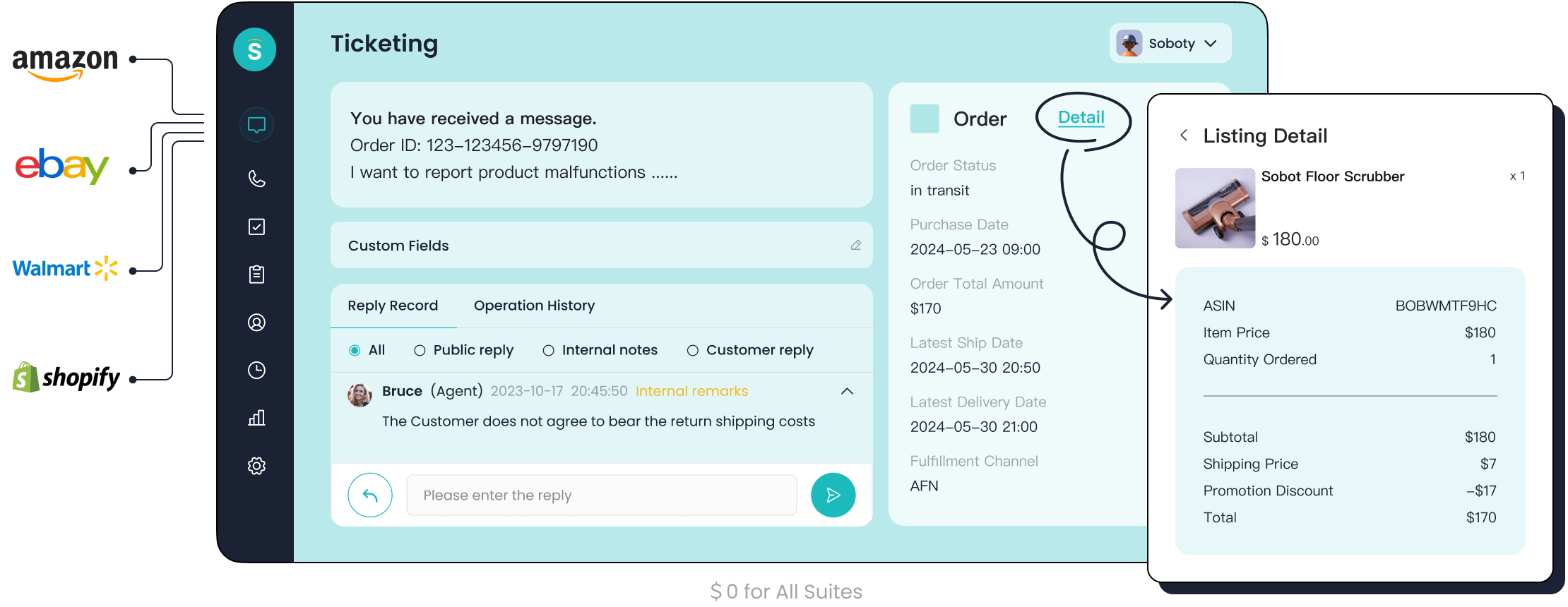
Sobot Ticketing System
Sobot Ticketing System gives you a unified platform to manage all your customer conversations. You can handle email, chat, voicemail, and even e-commerce tickets in one place. The system uses AI to automate ticket routing, send reminders, and provide smart notifications. You can set SLAs, merge tickets, and use canned responses to save time. Sobot supports multiple languages, so you can help customers from around the world.
Pros:
- Unified platform for all channels (email, chat, voicemail, e-commerce)
- AI-powered automation for ticket assignment and responses
- Multilingual support for global teams
- Trusted analytics and real-time performance tracking
- Seamless integration with Shopify and other platforms
- Easy-to-use interface with high ratings for usability
Cons:
- Advanced features may require setup and training for best results
Pricing:
Sobot offers flexible plans based on your business size and needs. You can request a quote or demo on their official website.
Ideal Users:
Sobot fits businesses of all sizes, especially those in retail, finance, gaming, and enterprise services. If you want to unify your customer service and automate routine work, Sobot is a strong choice.
OPPO, a global smartphone leader, used Sobot to handle high volumes of customer inquiries. With Sobot’s chatbot and ticketing system, OPPO achieved an 83% chatbot resolution rate and a 94% positive feedback rate. The company also saw a 57% increase in repurchase rate. Read OPPO's story.
How Sobot Compares in Real-World Deployments:
| Feature/Aspect | Sobot Rating | Competitors Rating | Notes |
|---|---|---|---|
| Ease of Use | 5.0 | ~4.1 - 4.5 | Sobot scores higher, making it easier for your team to learn and use. |
| Features | 4.9 | ~4.0 - 4.5 | Sobot offers more comprehensive features, including omnichannel and AI. |
| Value for Money | 4.9 | ~4.0 - 4.5 | Sobot provides strong value, often rated better than competitors. |
| Customer Support | 5.0 | ~3.9 - 4.5 | Sobot’s support is rated excellent, helping you succeed with help desk automation. |
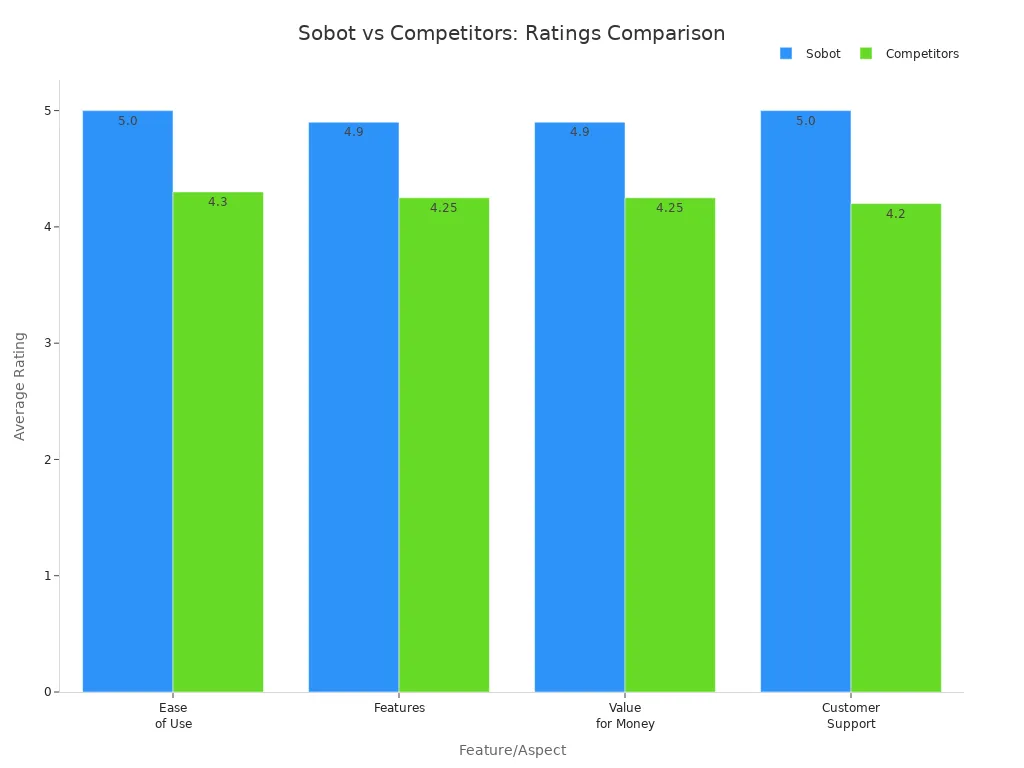
Zendesk
Zendesk is a popular help desk automation platform that centralizes customer communications. You can use it for chat, email, and phone support. Zendesk offers many integrations and strong reporting tools.
Pros:
- Centralizes all customer communications
- Supports omnichannel engagement
- Integrates with Slack, Microsoft Teams, Zoom, and more
- Customizable workflows and robust analytics
- Scalable for midsize to large businesses
Cons:
- High pricing, especially for advanced features
- Many features locked behind higher-tier plans
- Customer support can be slow or unhelpful
- Complex setup and customization may require IT resources
- Mobile app can be slow and less efficient
Pricing:
Zendesk starts at $19 per agent/month for basic plans. More robust suites start at $49 per agent/month. Costs rise quickly as you add agents or need advanced features. Many essential tools are only available as add-ons, which can increase your total cost. This makes Zendesk less affordable for small businesses or startups.
Ideal Users:
Zendesk works best for midsize and large companies that need advanced help desk automation and can afford higher costs. Small businesses may find the pricing and complexity challenging.
Freshdesk
Freshdesk is known for its user-friendly interface and strong ticket management. You can use it for email, phone, chat, and social media support. The platform offers automation, workflow features, and AI-powered bots.
Pros:
- Easy to use and navigate
- Multi-channel and omnichannel support
- Robust ticket management with automation
- Scalable for all business sizes
- Extensive integrations and open API
- Mobile app mirrors desktop features
- SLA management, canned responses, and analytics
Cons:
- Some features require extra training or customization
- Learning curve for advanced features
- Advanced omnichannel features only in higher-tier plans
Pricing:
Freshdesk offers a free plan with essential features. Paid plans start at $15 per agent/month (Growth) and go up to $79 per agent/month (Enterprise). This makes Freshdesk affordable for small businesses and scalable for growing teams.
Ideal Users:
Freshdesk fits small and medium-sized businesses that want affordable help desk automation with easy setup. Larger companies can use advanced plans for more features.
Zoho Desk
Zoho Desk gives you a flexible help desk automation solution with high customization. You can automate tasks, centralize communication, and track agent performance. Zoho Desk supports over 300 integrations, making it easy to connect with your other business tools.
Pros:
- Highly customizable to fit your needs
- Flexible for many use cases
- Efficient issue monitoring and time-saving automation
- User-friendly interface and good mobile app
- Over 300 integrations, including CRM, Slack, and Google Workspace
Cons:
- Interface can be confusing for beginners
- Limited features on lower subscription tiers
- Reports of excessive notifications and slow customer support
- Some integration issues with Office 365 and other Zoho products
Pricing:
Zoho Desk offers a free plan with basic features. Paid plans start at $14 per agent/month. Higher tiers unlock more customization and automation.
Ideal Users:
Zoho Desk suits small to mid-sized businesses that want a flexible, customizable help desk automation tool and already use other Zoho products.
Salesforce Service Cloud
Salesforce Service Cloud is a powerful help desk automation platform for enterprises. You can manage cases, automate workflows, and use AI for smarter support. The platform offers strong reporting, omnichannel routing, and deep integration with Salesforce CRM.
Pros:
- Global accessibility with internet connection
- Trusted CRM platform with a strong reputation
- Wide range of consulting and technical partners
- Streamlines customer service and case management
- Intelligent case and knowledge management
- Automation and workflow capabilities
- Robust analytics and reporting
- Enhanced collaboration features
Cons:
- Requires stable internet connection
- Less control over upgrades and downtimes
- High cost, less suitable for small companies
- Complexity may require expert consulting
Pricing:
Salesforce Service Cloud pricing starts at $25 per user/month (Starter), $80 (Professional), $165 (Enterprise), and $330 (Unlimited). The higher tiers offer more customization and advanced features. This transparent pricing helps you plan your budget.
| Solution | Pricing Range (per user/month) | Key Notes |
|---|---|---|
| Salesforce Service Cloud | $25 (Starter) to $330 (Unlimited) | Broad feature set, AI automation, extensive integrations, scalable for enterprises. |
| Freshdesk | $15 (Growth) to $79 (Enterprise) | Lower entry price, fewer advanced features. |
| Microsoft Dynamics 365 | $50 (Professional) to $195 (Premium) | Mid to high pricing, less flexible than Salesforce. |
| ServiceNow | $70 to $100 (typical license cost) | Higher, less transparent pricing, requires consultation. |
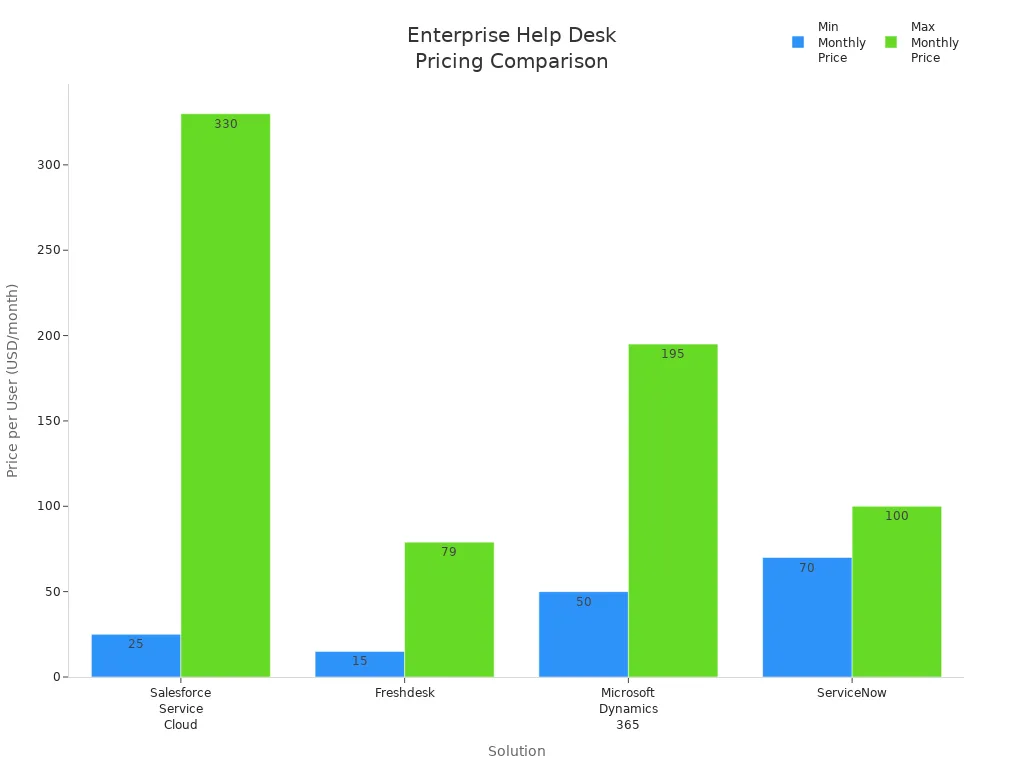
Ideal Users:
Salesforce Service Cloud is best for large enterprises that need advanced help desk automation, deep CRM integration, and global support.
Essential Features
AI and Automation
AI and automation shape the way you manage customer support today. You can use smart ticket automation to analyze, categorize, and route tickets based on urgency. AI-powered chatbots answer common questions instantly, reducing wait times and freeing your agents for complex issues. Natural language processing helps the system understand what your customers need, while sentiment detection highlights urgent requests. Sobot’s Ticketing System uses these features to automate ticket creation, assignment, and escalation. You can also automate routine tasks like password resets, making your team more efficient. AI-driven insights help you spot trends and prevent future problems.
Tip: Automating repetitive tasks lets your agents focus on delivering personal, high-quality service.
Omnichannel Support
Omnichannel support means your customers can reach you through email, chat, voice, or social media—without repeating themselves. Companies with strong omnichannel strategies keep 89% of their customers, compared to only 33% for those with weak strategies (source). Sobot’s unified platform brings all channels together, giving your agents a single view of every customer. This approach improves agent efficiency and speeds up response times. You can deliver consistent, personalized support and build stronger customer loyalty.
| Benefit | Impact |
|---|---|
| Unified customer view | Faster, more accurate responses |
| Seamless channel switching | Less customer frustration |
| Personalized interactions | Higher satisfaction and retention |
SLA Management
Service Level Agreement (SLA) management sets clear targets for response and resolution times. You can customize SLAs for different ticket types and priorities. Real-time SLA timers help your agents prioritize work, while escalation rules prevent missed deadlines. Sobot’s Ticketing System lets you set and track SLAs, pause timers when tickets are on hold, and generate detailed reports. This ensures you meet customer expectations and maintain high service quality.
- SLAs define how quickly you respond and resolve issues.
- Automated escalations keep your team on track.
- Custom SLAs match your business needs.
Analytics
Analytics give you the power to improve your support operations. Real-time dashboards show you conversation metrics, agent performance, and customer satisfaction. Sobot provides trusted analytics that help you spot common issues and track trends. You can use sentiment analysis to understand customer emotions and custom reports to measure what matters most to your business. These insights help you make better decisions, coach your team, and deliver better service every day.
Note: Organizations that use advanced analytics see higher customer satisfaction and more efficient teams.
Trends for 2025
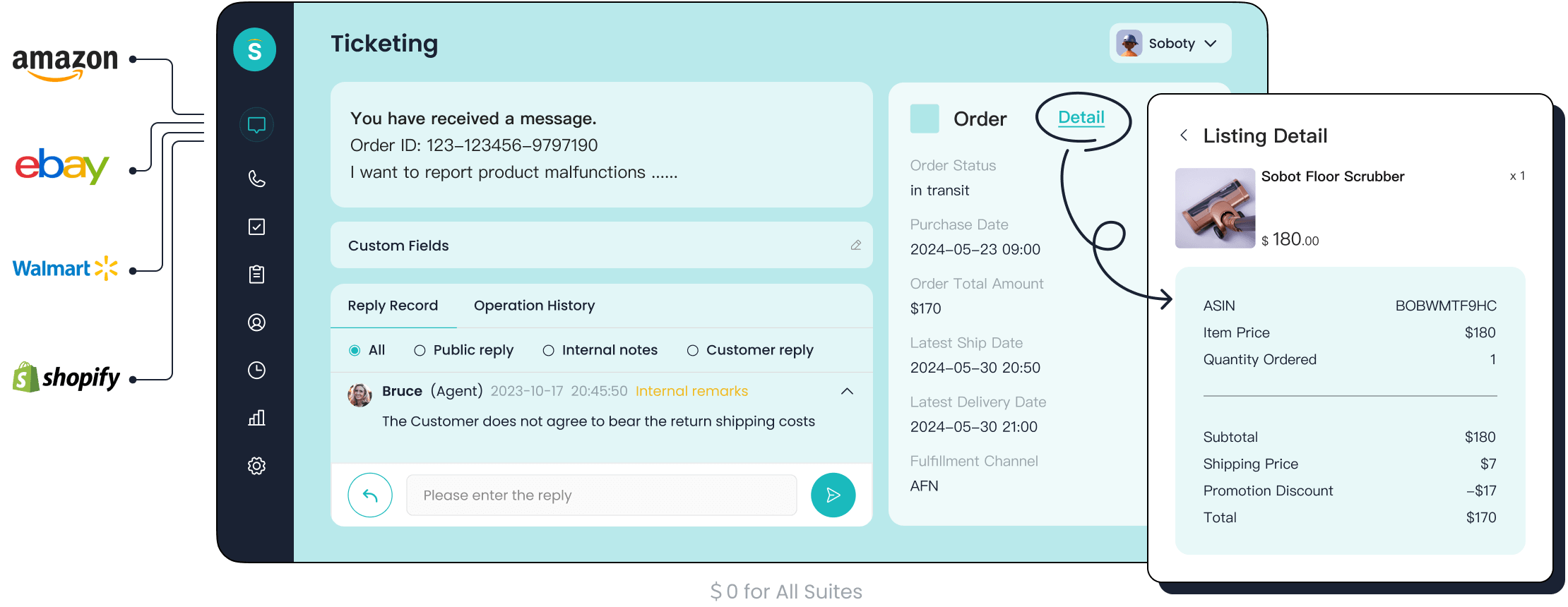
AI Advancements
You will see AI change the way you work in customer service. By 2025, experts predict that 80% of customer service teams will use generative AI to boost agent productivity and improve customer experience. AI now does more than answer simple questions. It can understand natural language, analyze customer feelings, and even suggest the best replies to agents in real time. You can expect chatbots and voice assistants to become smarter and more helpful. AI will also help you spot problems before they happen and offer solutions right away.
- Better natural language processing for chatbots and voice assistants.
- AI that adds empathy by learning from past conversations.
- Agentic AI that can solve problems on its own.
- Generative AI that writes emails, creates content, and personalizes messages.
- AI-powered automation that manages complex tasks, like returns or refunds.
Sobot uses AI to automate ticket routing, summarize conversations, and provide smart notifications. This means your team spends less time on routine work and more time helping customers.
AI helps you deliver faster, more accurate, and more personal support.
Omnichannel Growth
Omnichannel support is now a must-have for any business. In 2025, you need to meet your customers wherever they are—email, phone, chat, social media, or mobile apps. Customers expect to switch between channels without repeating themselves. If you offer seamless support, you will keep more customers happy and loyal.
The market is growing fast because companies want to connect all their channels and systems. Integrated platforms let you move from chat to phone or email without losing track of the conversation. You also get a single view of each customer, which helps you solve problems faster.
Sobot’s omnichannel solution brings all your channels together in one workspace. You can manage conversations, track tickets, and see customer data in real time. This unified approach helps you deliver consistent service and stand out from the competition.
Omnichannel support is no longer optional. It is essential for customer satisfaction and business growth.
Self-Service
Self-service tools are becoming more popular every year. Customers want quick answers and do not always want to wait for an agent. In 2025, you will see more businesses use AI-powered chatbots, knowledge bases, and automated workflows. These tools let customers solve simple problems on their own, any time of day.
For example, a chatbot can help a customer reset a password or check an order status. AI can also guide users to the right help articles or escalate complex issues to a human agent. This saves time for both your team and your customers.
Sobot’s self-service features include multilingual chatbots and smart ticketing. You can offer 24/7 support and reduce the number of routine tickets your agents handle. This leads to faster resolutions and higher satisfaction.
Self-service empowers your customers and makes your support team more efficient.
Choosing the Right Solution
Assessing Needs
You need to start by understanding your business goals and customer service challenges. Think about your company size, industry, and the channels your customers use most. For example, a retail business may need strong e-commerce integrations, while a financial service provider may focus on data security and compliance. Make a list of must-have features, such as automated ticket routing, AI chatbots, and omnichannel support. Sobot offers a unified platform that covers these needs, making it a strong choice for many industries. Always consider your growth plans. Choose a help desk automation solution that can scale as your business expands.
Tip: Survey your support team and customers to find out what features matter most. This helps you match the software to real needs.
Common Mistakes
Many organizations make mistakes when choosing help desk automation tools. Avoid these common pitfalls:
- Relying too much on one technology instead of aligning tools with business outcomes.
- Skipping IT involvement, which can cause integration and data issues.
- Automating complex or poorly designed processes without simplification.
- Leaving out key stakeholders during the selection process.
- Not testing the system enough before full rollout.
- Treating automation as simple task replication, not process improvement.
- Failing to monitor results or use the right success metrics.
- Ignoring how automation affects employees and company culture.
- Rushing in without a clear strategy.
- Not preparing your team for new workflows.
You can prevent these issues by planning carefully and involving the right people from the start.
Implementation Tips
A step-by-step approach helps you succeed with help desk automation. Follow these best practices:
- Define what excellent customer service means for your business.
- Build a strategy based on customer feedback and data.
- Select a solution that fits your size, budget, and needs. Sobot, for example, offers automated ticket routing, AI chatbots, and strong integration capabilities.
- Fix any process inefficiencies before automating.
- Start with critical workflows like ticket management and follow-ups.
- Check the vendor’s data security and reputation.
- Monitor performance with analytics and customer feedback.
| Feature | Description |
|---|---|
| Automated Ticket Routing | Assigns tickets to the right agents automatically. |
| Ticket Escalation | Raises priority if tickets are not resolved on time. |
| AI Chatbots | Provide 24/7 support and instant answers. |
| Canned Responses | Speed up replies with pre-written answers. |
| Alerts and Notifications | Keep agents and customers updated on ticket status. |
| Reporting and Analytics | Track ticket volume, response times, and satisfaction. |
| Knowledge Base | Offers self-service help to reduce ticket volume. |
| Workflow Automation | Handles routine tasks to reduce errors and save time. |
| Integration Capabilities | Connects with CRM and other tools for unified data. |
Try Sobot and other leading solutions with a free trial. This lets you see which platform fits your workflow best.
You have seen how top platforms help you improve customer service and efficiency. Sobot stands out with unified channels, AI-powered ticketing, and trusted analytics. Match each software’s features to your business goals for the best results. Try free trials, such as Sobot’s, to see what works for you. Keep reviewing your tools as technology changes. Companies that update their systems often see higher customer satisfaction and faster response times (source).
FAQ
What is help desk automation software?
Help desk automation software helps you manage customer support by automating tasks like ticket routing, responses, and reporting. You save time and reduce errors. For example, Sobot’s platform uses AI to handle tickets from email, chat, and voice channels.
How does help desk automation software improve customer satisfaction?
You can respond faster and solve problems more efficiently. Data shows that companies using help desk automation software see a 37% faster first response time and a 52% reduction in resolution time. Sobot’s unified system helps you deliver consistent support across all channels.
Can help desk automation software integrate with e-commerce platforms?
Yes! Many help desk automation software solutions, including Sobot, integrate with platforms like Shopify. This lets you manage customer orders and support tickets in one place, making your workflow smoother and improving customer experience.
Is help desk automation software suitable for small businesses?
Absolutely. Small businesses benefit from help desk automation software by saving time and reducing manual work. Sobot offers flexible plans that fit different business sizes. You can start small and scale as your company grows.
What features should I look for in help desk automation software?
Look for features like AI-powered ticketing, omnichannel support, SLA management, and analytics. Sobot’s help desk automation software includes these features, helping you track performance and improve service quality. Always match features to your business needs for the best results.
Tip: Try a free trial of Sobot’s help desk automation software to see how it fits your workflow.
See Also
Best Customer Support Software Solutions To Use In 2024
Leading Contact Center Platforms Evaluated For The Year 2024
Best Live Chat Support Tools Available In 2024
